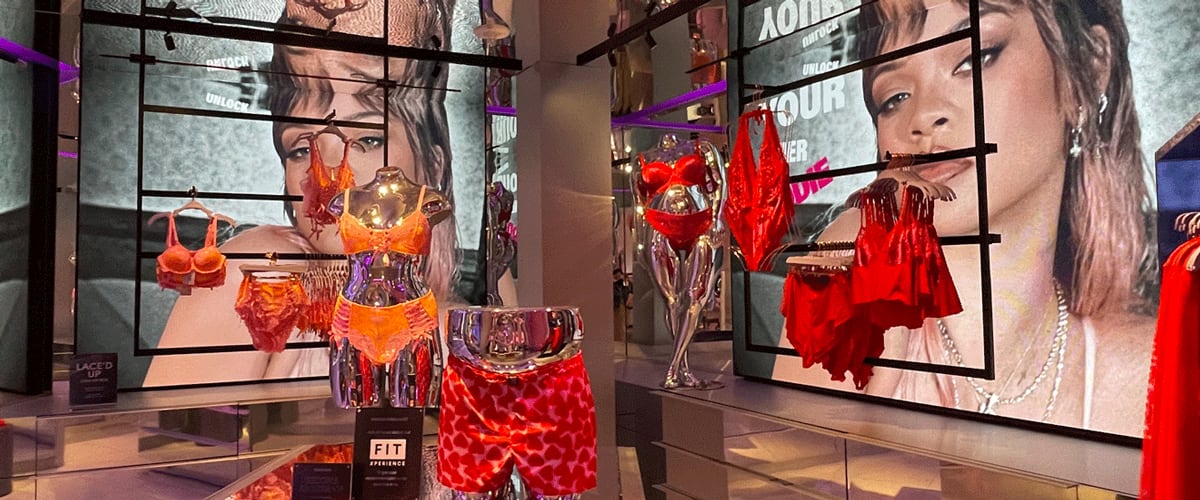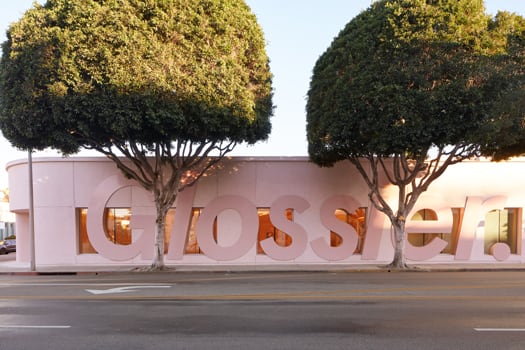
Here’s why online retailers understand that traditional brick-and-mortar models are a natural extension of their brand.
As department stores like Sears and JC Penny scale back their portfolios, digitally native brands like Peloton, Warby Parker, Fabletics, and even Amazon are investing in their brick-and-mortar presence to increase engagement, boost profitability, and realize the competitive advantages that retail spaces provide. No longer just a place for customers to shop, the modern retail store is at once a brand-building venue and advertising vehicle, a seamless distribution center, and a place where customers can take advantage of extended services and build relationships that keep them coming back.
Rhianna’s Savage X Fenty lingerie brand has opened its first physical location at Fashion Show Las Vegas. Zappos is testing the brick-and-mortar model with Zappos Unboxed, which opened in Mall St. Matthews in Louisville last year. Eco-friendly sneaker brand Allbirds, which recently made its debut on the Nasdaq exchange, now boasts more than 30 stores globally. And with nearly 100 showrooms across the country, fitness streaming startup Peloton has employed a sales strategy that is grounded in brick-and-mortar.
Even when factoring in COVID-19-related e-commerce increases, physical stores still account for 85% of retail sales, according to a report from Deloitte. And now, after more than a year of shopping online, consumers have a renewed enthusiasm for connecting with brands in real life and enjoying a multisensory shopping experience that only brick-and-mortar can provide.

That fact hasn’t escaped digital-first beauty brand Glossier. In June 2021, its founder and CEO Emily Weiss announced the brand planned to open four new permanent physical locations in Seattle, Los Angeles, London, and New York.
“At a time when the appetite for online shopping, accelerated by the pandemic, has never been stronger, the promise of immersive, real-life experiences rooted in discovery and connection is paradoxically also more resonant than ever,” Weiss wrote in a blog titled “Glossier in 3D.”
“We imagine a future where digital and offline experiences exist in harmony, all in the service of helping people connect more deeply with themselves and others.”
—Emily Weiss, Glossier CEO
Dubbed “retailtainment,” e-tailers are increasingly focused on building unique, standout physical experiences for their customers. At Peloton’s showrooms, customers can take a spin while meeting their instructors in real life. At Madison Reed Hair Color Bars, customers can get their roots touched up while receiving in-person, how-to instructions. And at Glossier’s L.A. store, visitors can take a virtual drive through a desert, highlighted by an installation of Arizona’s Antelope Canyon.
Ironically for many digitally native brands, the decision to start out online was once a cost-saving measure. But now, amid skyrocketing marketing and digital acquisition rates, creating real life shopping experiences for customers is a more cost-effective way to generate brand awareness. And as Apple and Google move to restrict the use of cookies — which help marketers track browsing activity, purchases, and preferences —it’s become increasingly critical for brands to establish a physical presence that they can control.
The ability to offer customers a seamless, omnichannel experience is yet another reason e-commerce brands are pivoting to brick-and-mortar models. Physical stores can multi-task as convenient point-of-sale centers that allow customers to pick up and return online orders as well as distribution hubs that serve nearby customers, thereby reducing shipping expenses.
Brands that have achieved early success with online-only models have hit a growth wall. They’re realizing that the only way to increase sales is by opening stores that allow customers to engage with their products in real life, giving them confidence in their purchasing decisions and an experience that has the potential to build brand loyalty. More than just the latest trend with the digital crowd, existing in 3D is a natural next step for e-commerce brands and it’s coming to a shopping center near you.
Interested in staying in touch? Connect with us!